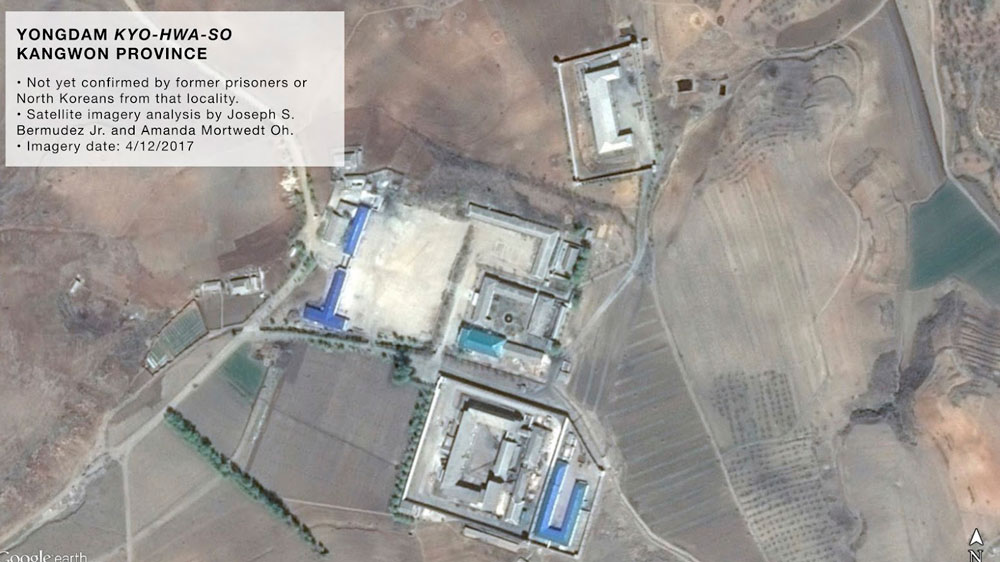New images show 'parallel gulag' in North Korea's prison camps
| Publisher | Radio Free Asia |
| Publication Date | 26 October 2017 |
| Cite as | Radio Free Asia, New images show 'parallel gulag' in North Korea's prison camps, 26 October 2017, available at: https://www.refworld.org/docid/5a9427c2a.html [accessed 27 May 2023] |
| Disclaimer | This is not a UNHCR publication. UNHCR is not responsible for, nor does it necessarily endorse, its content. Any views expressed are solely those of the author or publisher and do not necessarily reflect those of UNHCR, the United Nations or its Member States. |
2017-10-26
Reported by Richard Finney
 Satellite image shows a labor camp for criminal offenders in North Korea. HRNK
Satellite image shows a labor camp for criminal offenders in North Korea. HRNK
Satellite images released in a report Thursday by a Washington-based NGO show North Korean labor camps administered separately from a better-known camp system holding political prisoners, revealing a wider network of facilities set up for offenders than was previously known.
The camps, called kyo-hwa-so and run by North Korea's Ministry of Public Safety (MPS), hold persons convicted of criminal rather than political offenses, the report, titled Parallel Gulag, by the Committee for Human Rights in North Korea (HRNK), says.
Unlike political prisoners often held for life by North Korea's secret police in officially unacknowledged labor camps, offenders confined in MPS-run facilities serve fixed terms, leading eventually to release.
They are also sentenced under judicial procedures and are allowed visits by family members, who can bring them food.
Conditions in both camp systems are brutal and inhumane, though, and differences in the treatment of prisoners held there are often "matters of degree, not principle," report author David Hawk says.
"Policies that combine forced labour with deliberate starvation, inadequate medical care and poor hygiene conditions cause the death of thousands of inmates annually," Hawk says in his report.
Twenty satellite images collected and analyzed by HRNK are included in the report, showing walled facilities, dormitories, guard towers, and barbed-wire fences.
Prisoners held in the camps often walk long distances to the mines, forests, and farms in which they work, the report says, adding that prisoners labor in unsafe conditions and are denied food and sometimes beaten for failing to meet production quotas.
Satellite imagery of the camps has proved "essential as supportive evidence for the testimony provided by former prisoners," many of whom have fled to China, and then moved to South Korea, following their release, according to the report.
Thursday's report reveals a wider system of labor camps than was reported in 2014 in the United Nations Commission of Inquiry on Human Rights in the Democratic People's Republic of Korea (COI), former Chair of the Commission Michael Kirby says.
"Through David Hawk's research and dedication, we in the outside world have come to know the gulags for what they are: instruments of fear and control by the DPRK," Kirby says.
"[These have] imposed on North Korea a huge system of detention that breaches United Nations law and universal, civilized standards."
Link to original story on RFA website
